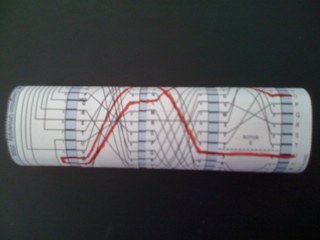Similarly, the rotors on the DIY Enigma machine can be set to match the desired specifications. The paper loops representing the rotors can be rearranged on the spindle to match the desired rotor order. The rotor window is modeled by a line on the spindle labeled "ROTOR SETTING LINE" and highlighted with up and down arrows. To orient a rotor to a given letter, the paper loop should be rotated on the spindle until the desired letter on the left side of the rotor aligns with the rotor setting line. The picture to the right shows a DIY Enigma machine with initial settings I-A, III-U, II-D.
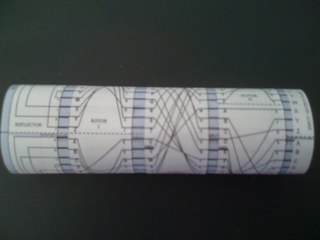
The rotors on the DIY Enigma machine are each labeled with a notch on one of the letters. For example, ROTOR I has a notch (identified by a thick line and the label "notch") at the letter Q. The rotation pattern of the real Enigma machine is modeled by the following rules:
- If the notch on either the left or middle rotor is at the rotor setting line, then all three rotors rotate up one position.
- If only the rightmost rotor has its notch at the rotor setting line, then the middle and right rotors rotate.
- Otherwise, only the right rotor rotates.
In the case of the initial setting, I-A, III-U, II-D, none of the notches are at the rotor setting line, so only the right rotor is rotated, yielding I-A, III-U, II-E.
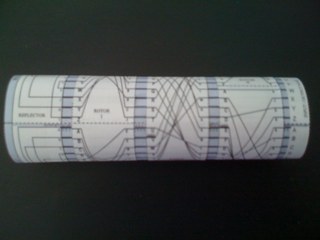
With the DIY Enigma machine, the wiring in the rotors is represented by lines that criss-cross from one side of the rotor to the other. The path taken by the electrical current is tracked by starting at the desired letter on the far right (labeled the INPUT/OUTPUT PANEL) and then following the connected lines across the three rotors, looping around the reflector, back through the rotors, and ending up back at the input/output panel. The picture to the right highlights the encoding of the letter F, with the circuit highlighted in red. The letter F on the input/output panel aligns with the wire labeled B on the right rotor (ROTOR II). This wire aligns with the wire labeled W on the middle rotor (ROTOR III), which similarly aligns with the wire labeled M on the left rotor (ROTOR I). The wire on the left rotor aligns with the wire labeled M on the reflector, which then sends the current back through the rotors from left to right, traveling on wires labeled O, G, and C, respectively. The C wire on the right rotor aligns with the letter L on the input/output panel, so the end result is that F is encoded to be L.

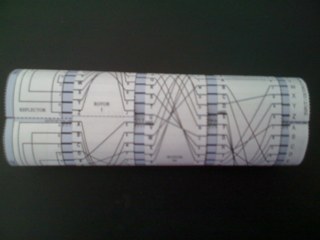

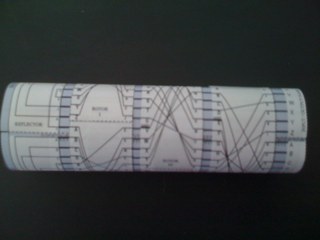
The end result of this process is that the text FOO is encoded as LCU by the DIY Enigma machine with initial settings I-A, III-U, II-D. The same settings will work to decode LCU, recovering the original text FOO.
